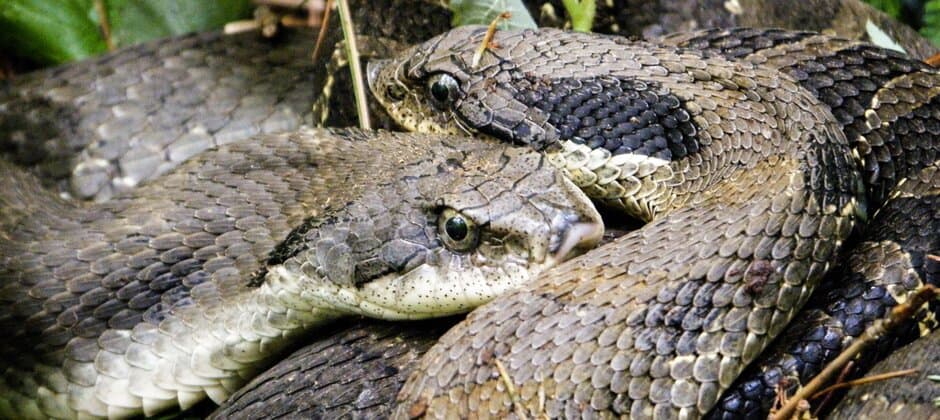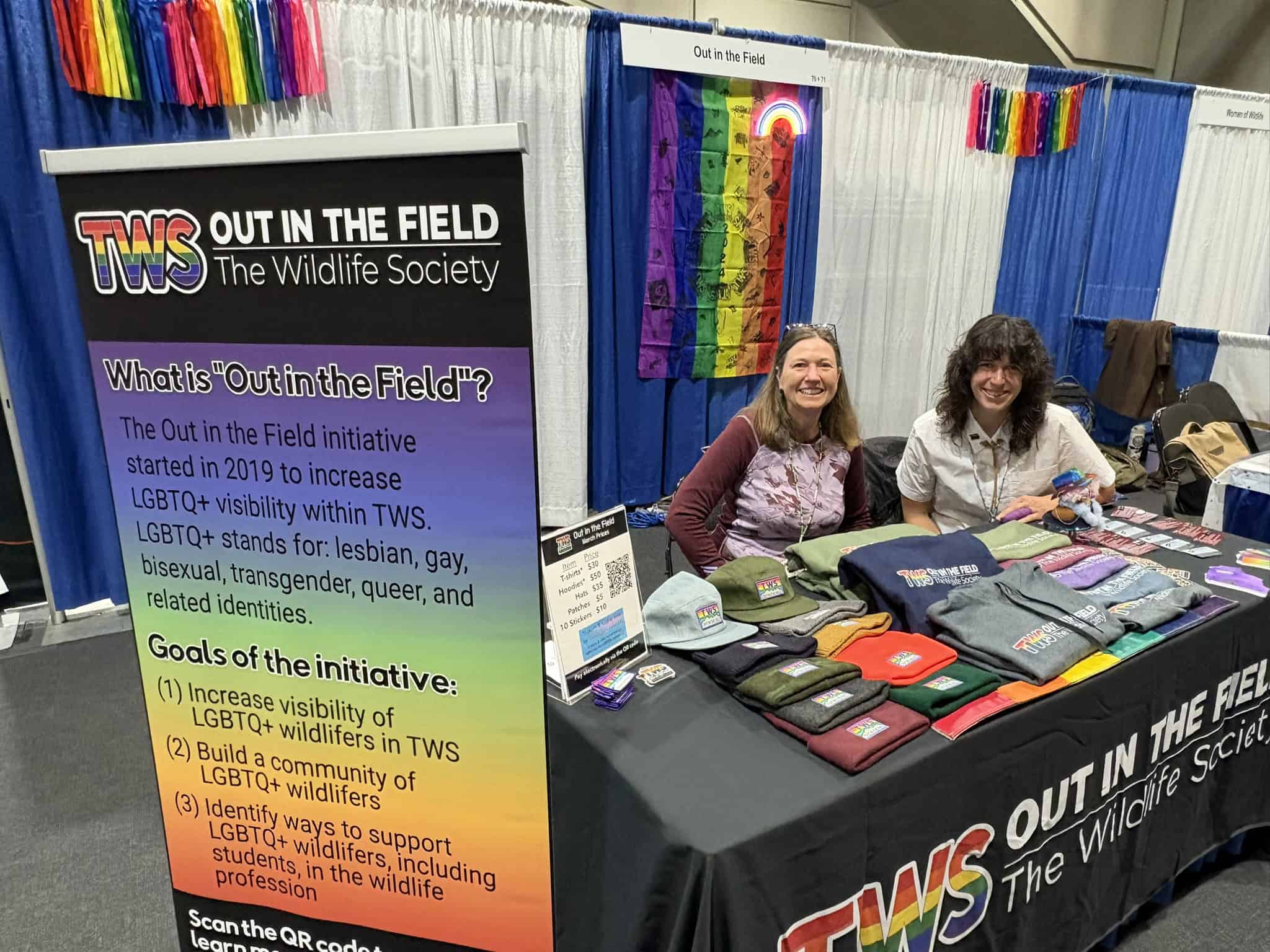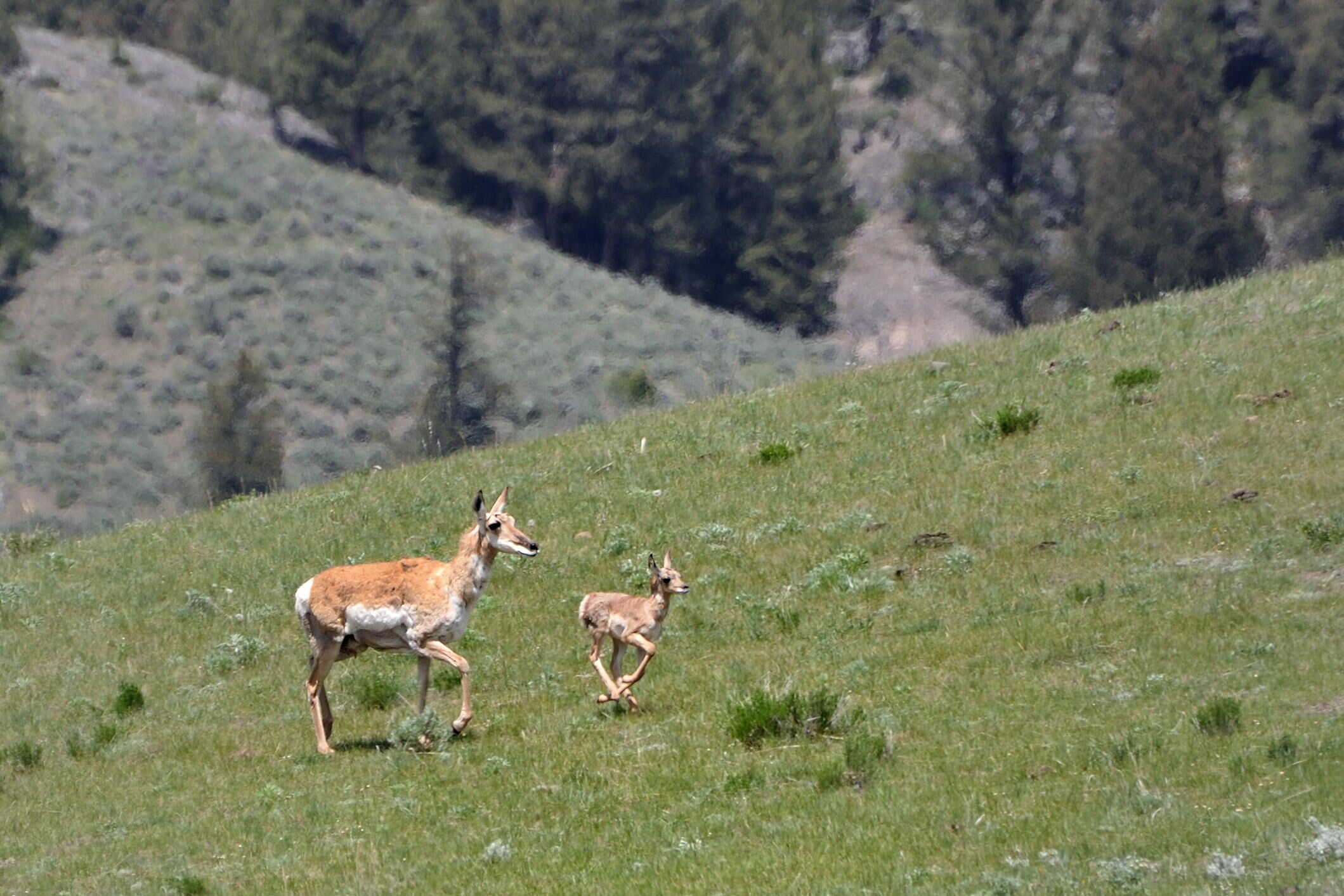Share this article
JWM: Hog-nosed snakes need sandy dunes for nesting
Saying eastern hog-nosed snakes are a little prickly is probably an understatement.
When Laura Robson, a master’s student at the University of Ottawa at the time, would approach one, the snake would rise up and inflate its body, like a cobra does.
Before you even see it, “you’ll hear it hiss at you,” Robson said. Sometimes a snake would even feign a strike as she approached it, though none of the more than 200 snakes she worked with ever actually hit her.
If you persist, the snake will even vomit and excrete at the same time, while producing a stinky musk. “They’ll stick their tongue out, and they’ll eventually play dead,” Robson said. But this is all a great act meant to repel potential predators.
“When they think you might be gone, they’ll pop their head up and see if you’ve left them alone,” she said.
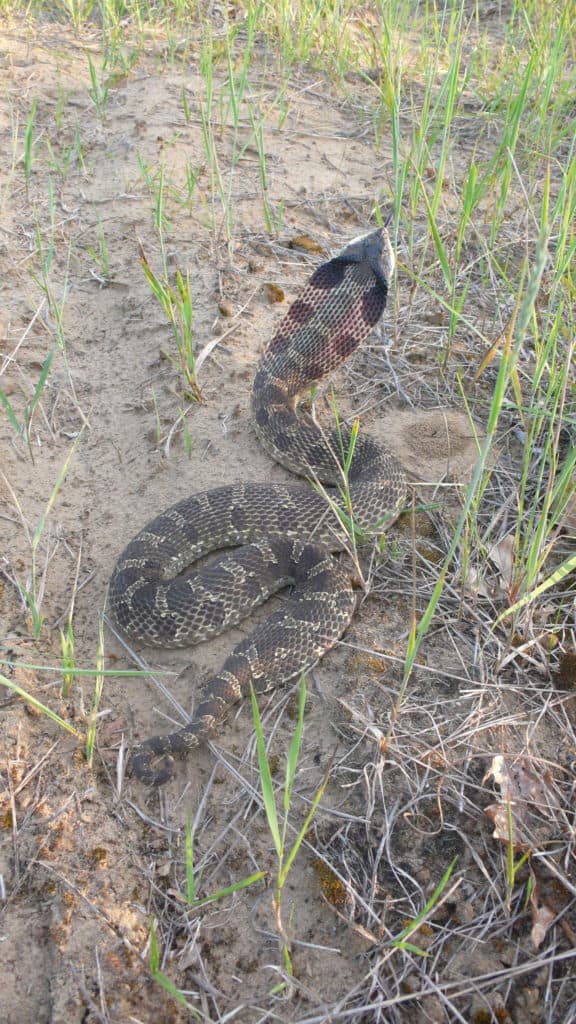
Eastern hog-nosed snakes inflate their necks when threatened, leasing some people to call them puff adders or spitting cobras. Credit: Leslie Anthony
The act worked for Robson’s coonhound — the dog was good at finding snakes in the wild in southern Ontario, but usually left the scene when the drama began.
Robson, now an environmental science teacher at a boarding school in British Columbia, was working on a project to better understand the habitat needs of eastern hog‐nosed snakes (Heterodon platirhinos) in Ontario. The species is listed as threatened on Canada’s Species at Risk Act due mostly to habitat loss and human persecution. In Canada, they are at the northern end of their range, found mostly in the southern part of the province along the shores of Lake Huron, Lake Erie and Lake Ontario. They typically stay in areas with sandy soil, but researchers didn’t know much about how the snakes use the land.
Starting in 2009, she and her co-authors of a study published recently in the Journal of Wildlife Management, set out to capture snakes in the Long Point region of Ontario. They fit the snakes with radio transmitters and released them. Then, they tracked them for three consecutive seasons — from May until they went into hibernation in October.
They found that nearly all the females they tracked laid their eggs underground in the same open sandy dune area before dispersing to an area farther away.
“It was very clear that open, early succession sand dunes is very critical for their nesting,” Robson said. “Without nesting, you don’t have a population.”
The area is technically protected, since it’s Crown land in Canada, but recreational dirt bikers and all-terrain vehicle users often come through the area.
“In theory, it’s protected, but nobody was really keeping track of it,” Robson said.
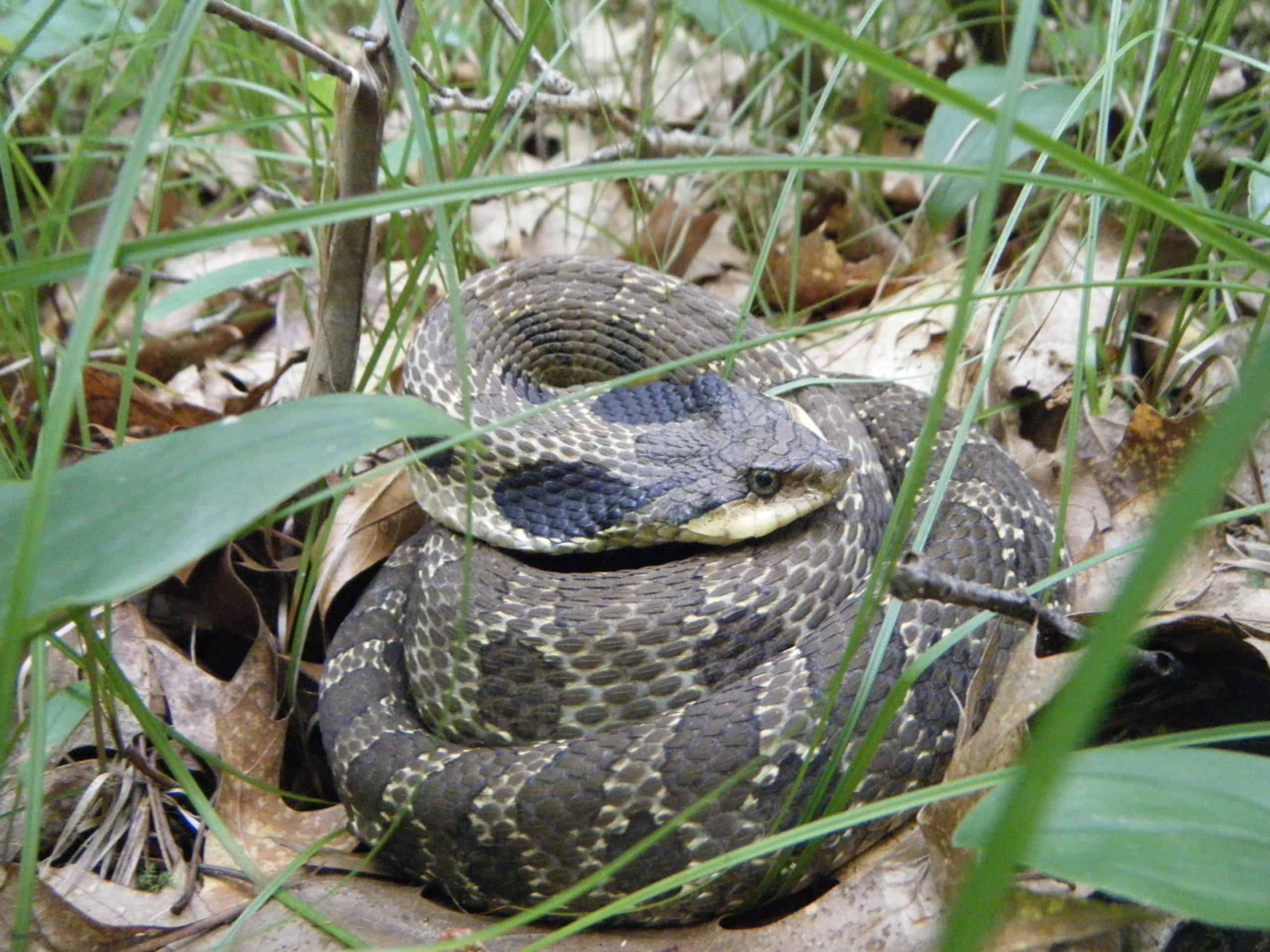
A coiled eastern hog-nosed snake. Credit: Laura Robson
Robson and her colleagues also found that while the snakes prefer open dune areas for nesting, and sometimes to warm up in the sun, they also like to be near forested areas where they can easily hide from predators. Mature forests that have a mixture of open areas where trees have fallen and closed canopies seemed to be the best for the eastern hog-nosed snakes they studied.
The snakes also tended to avoid paved roads, rarely crossing them. This makes the species difficult to manage in southern Ontario, one of the most populated parts of Canada, Robson said. But, she said, managers should consider the threatened snakes’ need for dune areas and mature forests when choosing conservation efforts.
“We need tracts of intact forest, and we need them to connect with each other,” she said.
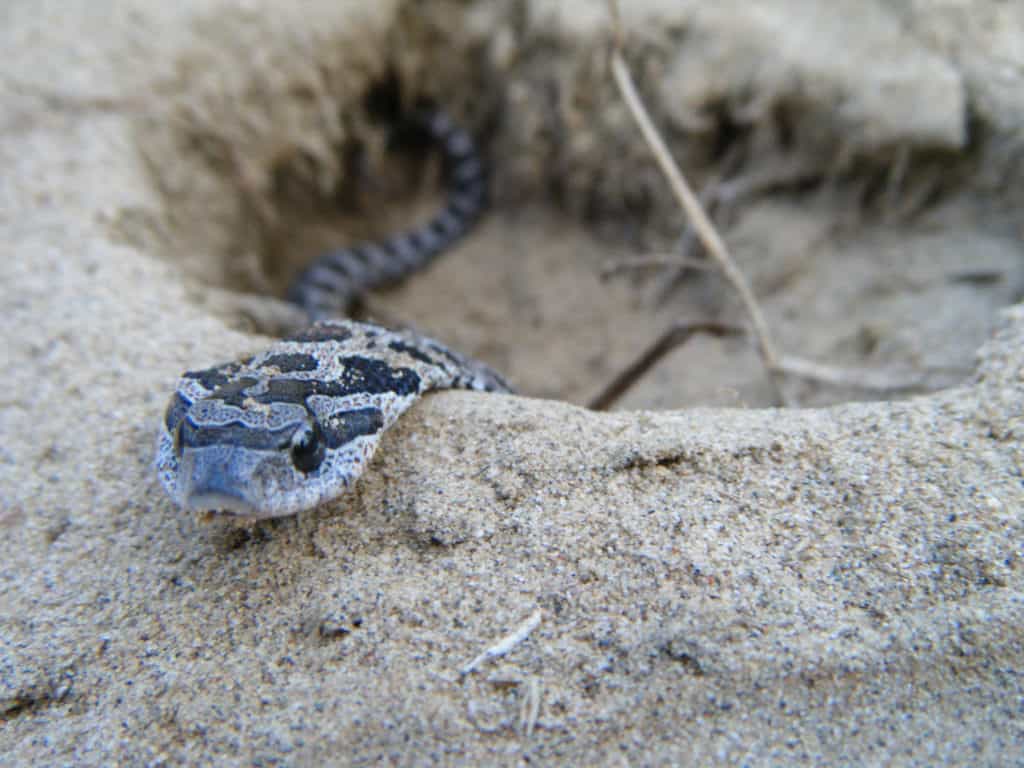
A neonate. Credit: Laura Robson
Their quirky behavior has led to people believing the snakes are venomous or dangerous.
“People in the area would call them puff adders, spitting cobras,” Robson said. It’s also difficult to identify them sometimes as they come in several color morphs.
“If you didn’t know your snakes well, it would be easy to get them confused,” she said.
But better public education could improve the ongoing issue the snakes face with persecution, she said.
This article features research that was published in a TWS peer-reviewed journal. Individual online access to all TWS journal articles is a benefit of membership. Join TWS now to read the latest in wildlife research.
Header Image: Eastern hog-nosed snakes mating. Credit: Laura Robson



